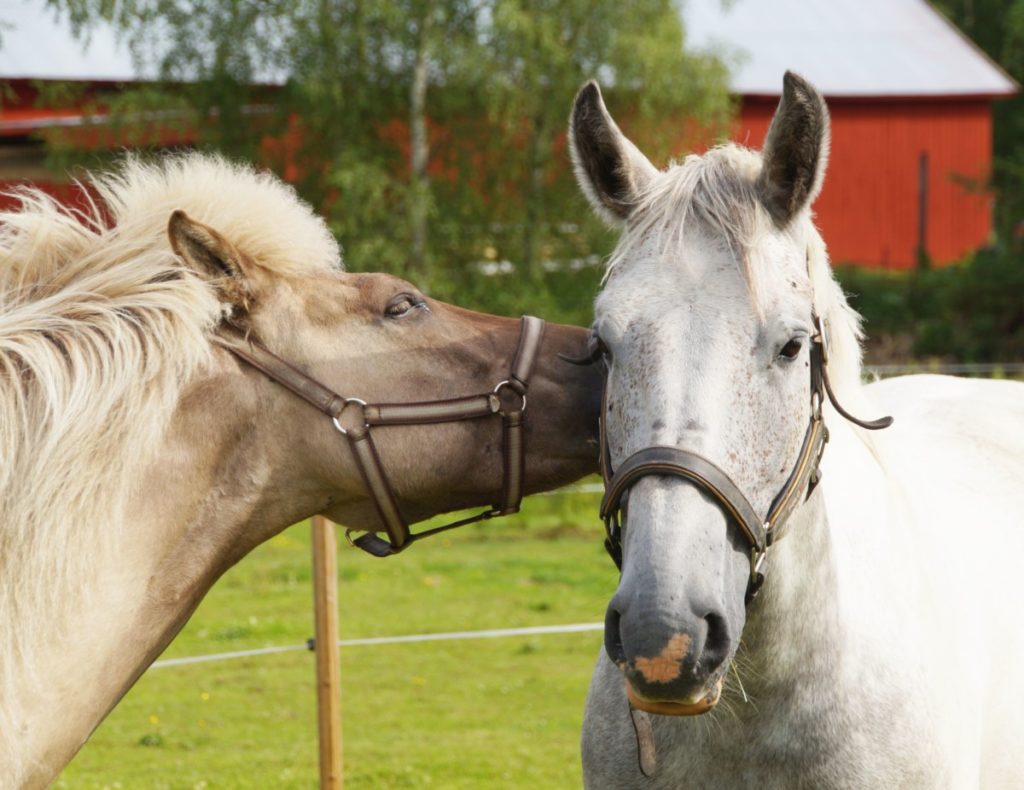Horses are considered majestic creatures, and their long, flowing manes help contribute to that image. However, a common question among new horse owners or enthusiasts is whether their manes are like human hair, in that it can continue to grow even after being cut.
A horse’s mane is like a human’s hair; the living part of each hair strand is the root, which is inside a skin follicle. The hair cells outside of the follicle are no longer alive, so as long as the root is not damaged, a horse’s mane will grow back when cut.
Each breed of horse has a unique mane with variations in length, texture, and thickness. The manes of some breeds are left natural, while others may be cut or braided.
But when it comes to cutting a horse’s mane, is it healthy for their hair like human hair? How long does it take to grow back? All these questions and more will be answered in the remainder of this article.

Understanding Mane Growth
The hair of both humans and horses grows from the inside out and in stages, creating a hair growth cycle. The stages of the hair growth cycle are:
- Anagen Phase: The growth period. Each strand of hair comes out of the skin through a follicle. Inside the follicle is the hair’s root, also referred to as a bulb. Blood is directed to the follicle, and new cells are created. As the cells form, the strand of hair is pushed further out of the follicle, making it grow longer.
- Catagen Phase: After several years in the anagen phase, blood stops flowing to the follicle, and the root detaches.
- Telogen Phase: A new root forms and begins to grow, which pushes the old strand of hair out of the follicle.
Each strand of hair goes through the process at different times, so all hair doesn’t fall out at the same time. (To better understand the hair cell cycle, and to see a diagram, check out the Journal of Cell Science.)
The part of the mane that is outside of a horse’s body is no longer alive; the cells die as they leave the follicle. Cutting a horse’s mane does not hurt the horse because the cells being cut are dead, and there are no nerves in it.
Is It Good to Cut a Horse’s Mane?
A horse’s mane is there to protect them from the elements—such as rain and sun—to keep flies off, and to protect against the bite of other horses or predators. However, ever since early horses have been domesticated, owners began to change some of the characteristics of a horse’s mane, especially how long it grows.
Cutting a horse’s mane is neither good nor bad. Cutting your horse’s mane all the way back to the skin isn’t recommended—since this can damage the roots—but trimming it down to a few inches isn’t a problem.
Why Cut a Horse’s Mane?
The length that an owner keeps their horse’s mane depends on how dedicated to the care they are and what the horse is used for. Long manes are high maintenance and, when neglected, become matted and full of plant debris. Many people who do not compete with or show their horses will opt to at least keep their horse’s mane trimmed.
The benefits of cutting a horse’s mane include:
- Easier Maintenance
- Following Traditional Breed Looks
- Decrease Wind Resistance for Racehorses
- Creates a Neat and Tidy Look
As an owner, it is up to you to decide how to care for your horse’s mane. Equisearch has a guide with tips and tricks for care for your horse’s mane, whether it is long or short.
How Long Does It Take for a Horse’s Mane to Grow Back?
If you chop off your horse’s long locks, for any reason, do not fret, it will grow back. The hair growth cycle is still happening under the skin, so it will continue to grow.
Many factors influence the rate of mane growth, such as breed, genetics, and health, but you can plan on it growing between .5 inches to 1.5 inches in a month.
Depending on how short your horse’s mane was cut, it may take several years for it to reach full length again.
Maintaining a Healthy, Growing Mane
Unfortunately, there is no miracle serum for instant mane growth, but there are a few things you can do to help it grow back healthy and strong.
Nutrition
A horse needs a healthy balanced diet to grow luscious locks. Hair growth is at the bottom of their body’s to-do list. When a horse lacks calories, protein, vitamins, or minerals, their mane’s growth can slow or come to a complete stop. By providing your horse with a proper diet, you can help keep their mane growing non-stop.
Doing a little research, like reading The Science Behind Your Horse’s Feed, in US Equestrian, is a start when it comes to knowing what to feed your horse. Be sure to speak to your veterinarian or an equine nutritionist to understand what your horse’s specific dietary needs are. Breed, age, and activity level will determine how much of each nutrient they need to consume.

Supplements
There is no alternative for a healthy diet, but sometimes supplements are an excellent addition. Both a horse’s hooves and hair are made of a protein called keratin. Since they are made of the same protein, supplements aimed at one will also benefit the other.
Supplements contain vitamins and minerals that support your horse’s bodily processes, including cell growth. Adding a supplement to your horse’s feed can boost the growth of their hair cells. Speak to your vet before starting or stopping supplements to make sure your horse is getting the amount they need.
Hair Care
Although the mane you see is made of dead hair cells, certain shampoos and conditioners can help keep it healthy by moisturizing the hair follicles and increasing elasticity. This helps prevent the strands of hair from breaking. When a horse’s mane is over washed or not adequately brushed, the hairs become brittle and are prone to breaking.
Unless your horse loves to roll in the mud, there is no need to wash them more than once a week. Even washing it that frequently isn’t necessary unless you are showing your horse or competing.
After applying a conditioner and while their mane is still wet, use a wide-toothed comb to remove the tangles gently. Start at the bottom of their mane and work your way up towards the top. You are finished when you can smoothly run the comb through their mane from top to bottom with no snags.
Environmental Conditions
If your horse is being harassed by flies, mosquitoes, or other creatures, they may rub against just about anything to scratch. The more your horse rubs, the more likely the hairs of their mane will break or be pulled out.
To make your horse more comfortable and to protect their hair, you can use a blanket or a fly sheet to cover their mane. When it gets long enough, you can choose to braid their mane to keep the strands safe, too.
Conclusion
As long as the hair follicles and roots of your horse’s mane are not damaged when you give it a trim, then your horse’s mane will continue to grow back. But, if you want to ensure their mane remains strong and healthy between haircuts, providing the horse with a proper diet and adequate care will help.
